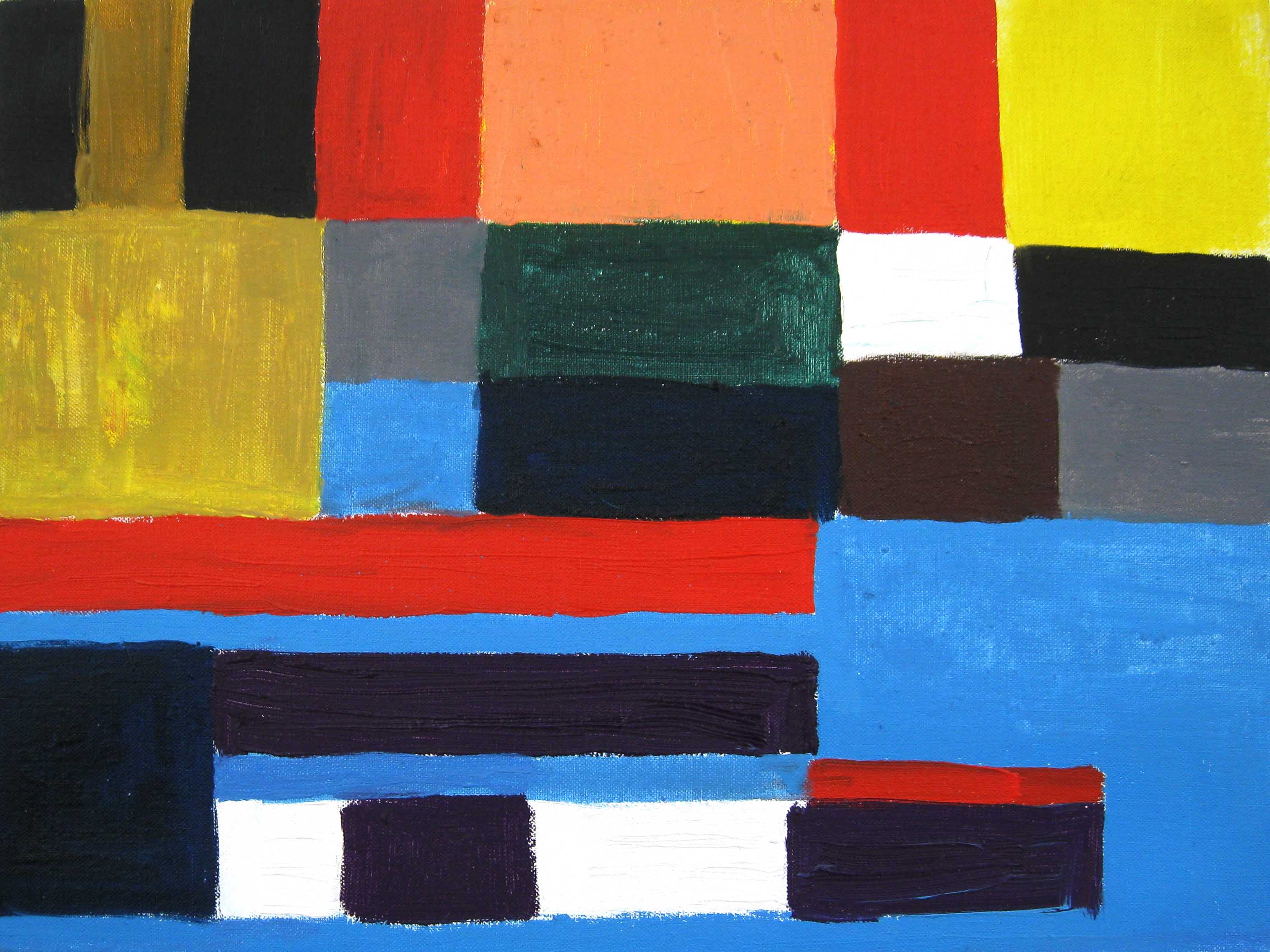THE GRID: order in a disordered world
Unlike Italian Renaissance idealist Leon Battista Alberti’s theories about painting as a window on the world, with painting intended as an illusionistic representation of an outer reality to be rendered realistically, the grid marks a major shift in art of the 20th and 21st centuries. Focusing on formal issues of shape, color, and linear play, artists such as Piet Mondrian and Kazimir Malevich viewed the grid as a major step in the evolution of modern art.
With her 1979 essay, “Grids,” art historian Rosalind Krauss underlined the importance of the grid as an emblem of modernism: “Surfacing in pre-war Cubist painting and subsequently becoming ever more stringent and manifest, the grid announces, among other things, modern art’s will to silence, its hostility to literature, to narrative, to discourse.” As early as 1912, Dutch-born artist Piet Mondrian created his first “compositions,” formed by grids of strict vertical and horizontal black lines, with precisely chosen fields filled with the three primary colors to find balance. In Russia, Suprematist artists such as Kazimir Malevich viewed the grid as not only a formal tool, but also as an ideological device to explore the role of art in the life of the working class and society.
The use of the grid continued over the course of the century, as the painter Agnes Martin drew thin lines across her canvases as systems of de ned space to communicate the calm inspiration of the New Mexico landscape. Other artists such as Sol LeWitt also implemented the grid as a fundamental component of his work, as he drew directly onto walls with a pared down format completely devoid of representation. These wall drawings led to projects with precisely de ned mathematical instructions for other artists to complete, so that LeWitt’s hand did not touch the artwork, and his sculptures expanded the grid into manifestations of three-dimensional form. Minimalists Carl Andre and Donald Judd took the basis of the grid and modified it for their own ends. Whereas Andre laid his metal square forms into geometric patterns on the floor, Judd experimented with the grid and its possible variations of design and form as a way to better understand interaction with light and space.
Today artists have continued to re-interpret the grid and adapt it to create a wide array of new forms. THE GRID: order in a disordered world presents the work of four artists from different parts of the world, all united in their use of geometric pattern and repetition of form. The paintings of Ghana-born artist Atta Kwami (who also lives in England) are influenced a great deal by the visual experiences he has had throughout his life. The play of shapes and colors recall architectural forms and textiles:
I would describe it as schematic; like a map, or rather a reaction to or interpretation of a map. It is about ownership, a way to finding myself, where I am. In that sense my work enhances a viewing of Kumasi and Ghana, where the sign painting workshops and rich textile traditions have engaged my attention. My passion lies in making... I have focused on color as subject matter, perhaps taking me back to what I started with as a child; my mother’s paints and her textiles were good resources. In recent works, I have pursued the use of the imaginary grid as a matrix for emotion. This structure is a smokescreen within which to create something new. Working in different places requires an ever-present preparedness to take the work wherever it demands to go. Wherever I go I take my world with me...
For more information please visit SITE131.




